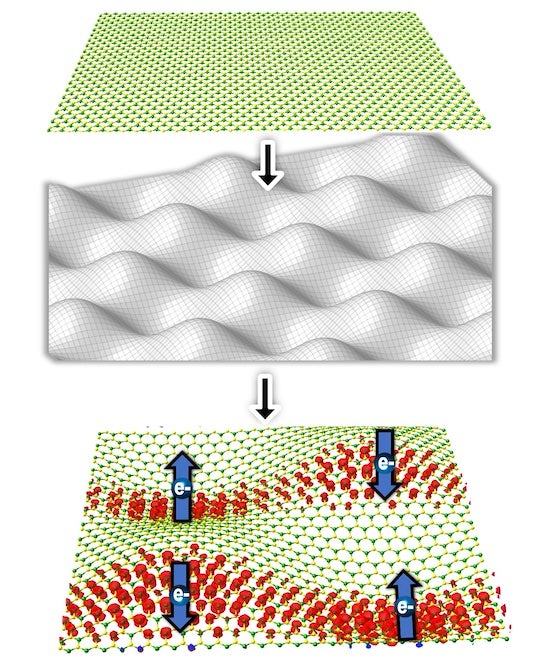Rice University models show unique properties of 2D materials stressed by  contoured substrates
contoured substrates
Atoms do weird things when forced out of their comfort zones. Rice University engineers have thought up a new way to give them a nudge.
Materials theorist Boris Yakobson and his team at Rice’s George R. Brown School of Engineering have a theory that changing the contour of a layer of 2D material, thus changing the relationships between its atoms, might be simpler to do than previously thought.
While others twist 2D bilayers — two layers stacked together — of graphene and the like to change their topology, the Rice researchers suggest through computational models that growing or stamping single-layer 2D materials on a carefully designed undulating surface would achieve “an unprecedented level of control” over their magnetic and electronic properties.
They say the discovery opens a path to explore many-body effects, the interactions between multiple microscopic particles, including quantum systems.
The paper by Yakobson and two alumni, co-lead author Sunny Gupta and Henry Yu, of his lab appears in Nature Communications.
– See more at Rice News

